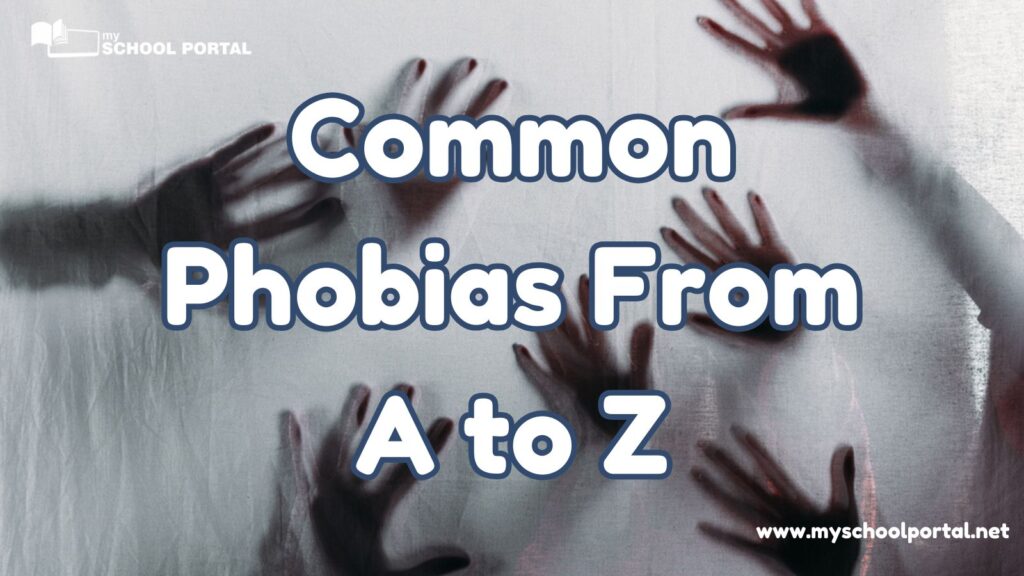A phobia is a type of anxiety disorder characterized by an excessive and persistent fear of a specific situation or object. It often triggers immediate anxiety responses such as trembling, rapid heartbeat, or nausea. According to the National Institute of Mental Health, approximately 12.5% of adults in the U.S. experience a specific phobia at some point in their lives, with women being more likely to be affected than men.
Types of Phobias
The American Psychiatric Association categorizes phobias into three groups:
- Social phobias: Fear of social situations involving judgment or embarrassment.
- Agoraphobia: Fear of situations where escape is difficult, like crowded spaces or leaving home.
- Specific phobias: Fear of particular objects or situations, such as animals, heights, or medical treatments.
List of Common Phobias (A–Z)
Below is an alphabetical list of some of the most common phobias:
A
- Ablutophobia: Fear of bathing
- Acrophobia: Fear of heights
- Arachnophobia: Fear of spiders
- Autophobia: Fear of being alone
B
- Bibliophobia: Fear of books
- Botanophobia: Fear of plants
C
- Claustrophobia: Fear of confined spaces
- Coulrophobia: Fear of clowns
- D
- Dentophobia: Fear of dentists
- Dystychiphobia: Fear of accidents
E
- Entomophobia: Fear of insects
- Emetophobia: Fear of vomiting
G
- Glossophobia: Fear of public speaking
- Gynophobia: Fear of women
H
- Hemophobia: Fear of blood
- Hydrophobia: Fear of water
M
- Mysophobia: Fear of dirt and germs
N
Nyctophobia: Fear of the dark
O
Ophidiophobia: Fear of snakes
P
- Phobophobia: Fear of phobias
- Pyrophobia: Fear of fire
S
- Scolionophobia: Fear of school
- Somniphobia: Fear of sleep
T
- Thalassophobia: Fear of the ocean
- Trypophobia: Fear of holes
V–Z
- Xenophobia: Fear of strangers or foreigners
- Zoophobia: Fear of animals
Symptoms of Phobias
Phobias can manifest through physical, emotional, and behavioral symptoms such as:
- Chest tightness, dizziness, or nausea
- Sweating, trembling, or increased heart rate
- Avoidance of the fear object or situation
Causes of Phobias
Phobias often arise due to genetic predisposition, traumatic experiences, or environmental influences. For instance, being bitten by a dog as a child might lead to a lifelong fear of dogs.
Treatment Options
Effective treatments for phobias include:
- Exposure therapy: Gradual exposure to the fear object to desensitize the individual.
- Cognitive Behavioral Therapy (CBT): Identifying and reframing negative thoughts related to the fear.
- Medications: Such as SSRIs, beta-blockers, or anti-anxiety drugs to manage symptoms.
Phobias, while common, are highly treatable with the right therapeutic approaches and support. If you suspect you have a phobia, consulting a mental health professional can help you take the first steps toward managing your fear.
Related
Stay updated with the latest student resources and insights from My School Portal! Subscribe to our newsletter for fresh content delivered straight to your inbox—no spam, just value 😊














